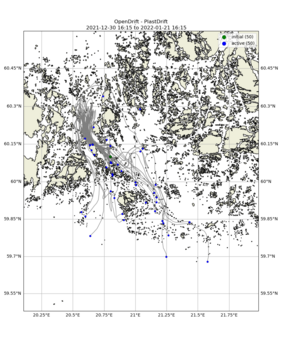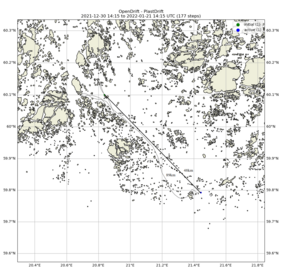The karaoke bar onboard Baltic Princess is closed for the time being, so we can stop guessing, whether our karaoke star nailed it with his/her interpretation of Frank Sinatra's "My way", or whatever song had been selected from the playlist. So the situation that was described above did not take place, but it could have happened. 5.6 trillion cigarettes are turned annually into smoke and ash, but something still remains after the last gasp, once the final glow has been extinguished. An orange butt. About two out of three cigarettes are not disposed properly, so it is no wonder that of the number of pieces of litter that are found on coastal and urban cleanups about 30-40 percent are cigarette butts. Ghost nets can be lethal to fish, marine mammals and seabirds, which can get tangled to them, but even if cigarette butts would appear to be less harmful to these animals due to their small size, that is not the case. Birds and fish can swallow them, which can cause suffocation or decreased bowel activity and digestive juices, which can also lead to death. Even if the butt in the sea does not end up in someone's stomach, it takes from one year to 10 years to degrade. And as this happens, the butt releases toxic chemicals into the water as well as smaller pieces of microplastics. An animal that is able to avoid being caught in a ghost net, and is not maybe attracted by orange cigarette butts, maybe be unable to see or avoid microplastics. They might not deliver a fast and sudden death, but they can be harmful, even lethal, as they are collected and consumed over the years. Tiny items can do a lot of damage, when lots of them end up where they are not supposed to.
This incident, or case study, in our Plastics in the Sea Campaign originates close to Turku, in South West of Finland, where our partner - University of Turku - is located. Turku is the oldest city in Finland, a traditional gateway to west, which has had a regular ferry service to Stockholm for over 60 years. About 2.6 million passengers travel annually through port of Turku (statistics from 2019). These ferries travel through the Archipelago Sea, which contains the largest archipelago in the world, if all uninhabitable rocks and skerries are included. The aim of this case study is to demonstrate, where cigarette butts, which fell overboard from a ferry at 20.8 degrees East and 60.1. degrees North will end up. Norwegian Meteorological Institute will track and trace the journey of these hypothetical cigarette butts with Open Drift Programme.
As there is close to 40 000 islands, rocks and skerries in this area, this case differs greatly from our previous incidents of Thurso and Bergen. There is more shoreline, the currents are weaker and therefore even the distances that the items have traveled during the first three weeks are shorter than in the other two cases, which we have studied earlier. There are great differences in the floating patterns of the individual items, some have traveled up to 160 km in total in three weeks, on the other hand, some have barely made 40 km or so. The distances between starting point and "where they are now" varies greatly, from 60 km to just few kilometers. There is a lot of shoreline here and some butts have hit the land more often than others. Out of sight, out of mind approach does not work well in the Archipelago Sea. The litter does not get lost in the sea, it returns to the shores over and over again, giving itself up, waiting to be collected, like a lost item looking for its owner...
Next Friday we will head further up north to the Bay of Bothnia, which is the northernmost part of the Baltic Sea. That is where our Oulu case has its starting point. We will get back to the journeys of our cigarette butts on 17th of February and find out, where they have drifted in the meantime...


